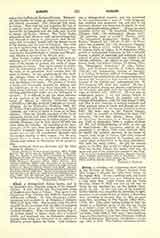

Albani, a distinguished Italian family, said to be descended from Albanian refugees of the fifteenth century. It soon divided into two branches, those of Bergamo and those of Urbino. They gave to the Church one Pope (Clement XI, 1700-21) and several wellknown cardinals. (1) GIAN GIROLAMO, soldier, statesman, and canonist, b. at Bergamo, January 3, 1504; d. April 25, 1591. For services to the Venetian republic he was rewarded with the office of inquisitor at Bergamo, where he made the acquaintance of Cardinal Ghisliero. When the latter became Pius V, he invited Albani to Rome, made him a cardinal (1570), and employed him on diplomatic missions, among them being the formation of an alliance of Christian princes against the Turks. Gian Girolamo was a distinguished canonist, and was accounted by his contemporaries a man of “solid judgment, rare erudition and eloquence, free and firm in his decisions, pleasant and temperate in speech, in every way a grave and reliable person”. Among his often reprinted works are “De donatione Constantini” (Cologne, 1535), “De cardinalatu” (Rome, 1541), “De potestate papae et concilii” (Venice, 1544), “De immunitate ecclesiarum” (Rome, 1553): cf. Hurter, “Nomencl. Lit.” (2d ed.), I, 122.—(2) FRANCESCO (see Pope Clement XI).—(3) ANNIBALE, Cardinal–Bishop of Sabina (1711), cousin of Clement XI, b. August 15, 1682, at Urbino; d. September 21, 1751; patron of ecclesiastical literature; he left a valuable library, a gallery of paintings and sculpture, and a cabinet of coins that eventually was added to the Vatican collection. He edited, in two volumes, the letters, briefs, and bulls of Clement XI (Rome, 1724), the “Menologium Graecorum” (3 vols., Urbino, 1727), and historical memoirs of Urbino (Rome, 1722-24).—(4) ALESSANDRO, brother of Annibale, b. at Urbino, October 19, 1692; d. December 11, 1779. He entered the priesthood at the earnest insistence of Clement XI, but gave no little trouble to that Pope because of his worldly and undisciplined life. In 1721 Innocent XII made him cardinal. He was a friend of Austria during the delicate negotiations of his own time, and sided with the opposition in the reign of Clement XIV (1769-74). He was also an enlightened patron of art and artists, helped to reconcile with the Church the sculptor and art-historian Winckelmann, built the Villa Albani (1760), and filled it with treasures of antique sculpture and other precious relics of Greek and Roman art (dispersed by Napoleon I; the famous Antinous is there still). His coins went to the Vatican Library, over which he presided as bibliothecarius from 1761 (Strocchi, “De vita Alex. Albani,” Rome, 1790).—(5) GIOVANNI FRANCESCO, b. at Rome, February 26, 1727; d. September, 1803; a nephew of Clement XI, and Cardinal–Bishop of Ostia at the age of twenty-seven.—(6) GIUSEPPE, nephew of the preceding, b. at Ronne, 1750, made cardinal 1801; he shared the habitual devotion of his house to Austria, took refuge in Vienna, 1796-1814, returned to Rome after the downfall of Napoleon, and occupied offices of distinction in the papal administration until his death (1834). He left his fortune partly to the Holy See, partly for religious purposes. With his brother Filippo the family died out; its name and part of its possessions passed to the Chigi.
THOMAS J. SHAHAN

